After travelling to the Altamira cave paintings inside northern Spain, Picasso famously said “after Altamira, all is decadence.” Picasso was not kidding. The art inside this cave and within most other caves that dot portions of Spain, France, and other areas worldwide are amongst the best art pieces ever created.
As with all great art, they’ll offer insight into the way in which people of that day thought, though it took place tens of thousands of years ago. Here is a list of the oldest cave paintings:
7. Magura Cave
Date: 6300 BC – 3000 BC
Location: Bulgaria
Subject: Silhouettes of women, males hunting and dancing, animals, people wearing masks, plants, tools, and stars.
Discovered By: Bulgarian Council of Ministers
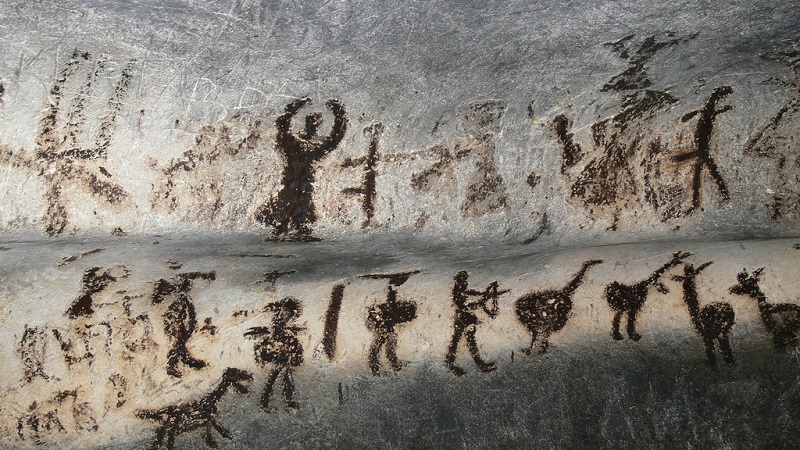
In Bulgaria, the Magura Cave is among the largest caves in the NW portion of the country. Its cave walls are adorned by prehistoric cave paintings that date back around 8000 to 4000 years ago. Over 700 drawings were discovered on its cave walls. They’re painted with bat excrement and represent dancing and hunting people and various animals.
Painted signs may be organized into four groups: symbolic, geometric, zoomorphic, and anthropomorphic figures.
For group one, there are bi-triangular silhouettes that have archers, raised rounded arms, copula, ithyphallic figures, linear schematic anthropomorphic figures that have “fungiforms” and raised arms.
In regard to zoomorpic items, there are bovids, caprids, dogs, big birds, as well as schematic linear quadrupeds.
Geometric signs depict vertical parallel lines, T-shaped figures, vertical parallel zigzags, horizontal zigzags, tree-like or branch-like figures, rhombi, chessboard patterns, crossed networks, horizontal stair-like patterns, crossed circles and honeycomb networks.
Few rayed circle figures, primarily the two unica of the calendar scene, represent a sun depiction.
6. Cueva de las Manos
Date: 7000 BC
Location: Argentina
Subject: Outlines of human hands
Discovered By: European settlers
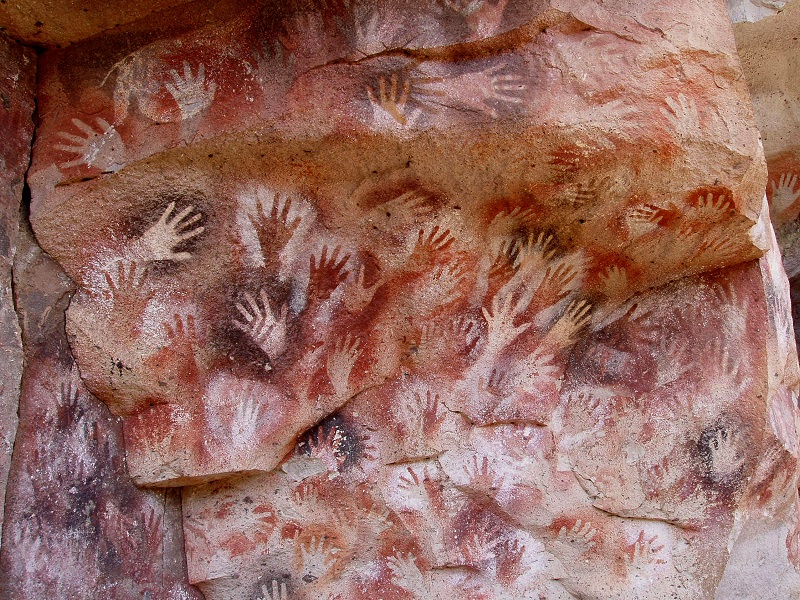
In the Patagonian landscape of southern Argentina, Cueva de las Manos is a cave in an isolated region. It’ll take its reference from the stenciled outlines of hands of humans; however, there also are several depictions of rheas, guanacos, additional animals, and hunting scenes.
The majority of the human hands are left hands, suggesting that painters held spraying pipes using their right hand. These paintings are believed to have been made from 13,000 to 9,500 years ago.
Cueva de las Manos has a rock art hand painting panel, designed by inhabitants of 9,000 years ago.
Also, inside the cave there are rock art displays of humans, rheas, guanacos, felines and additional animals, as well as zigzag patterns, hunting scenes, representations of the sun, and geometric shapes.
5. Laas Gaal
Date: 9,000 BC – 3000 BC
Location: Somalia
Subject: Cows in ceremonial robes that are accompanied by a giraffe, domesticated dogs, and humans.
Discovered By: French archaeological team
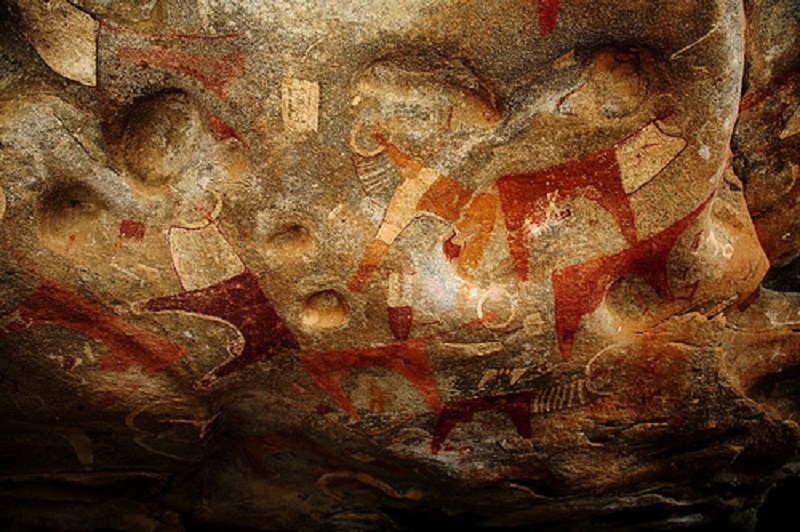
Laas Gaal is a rock shelter and cave complex inside northwestern Somalia containing some of the earliest-known rock art within the Horn of Africa and, in general, the African continent. These prehistoric cave paintings are estimated to be between 11,000 to 5,000 years old.
They depict cows in ceremonial robes that are accompanied by a giraffe, domesticated dogs, and humans. Cave paintings are well preserved and retain their strong colors and clear outlines.
These cave paintings are some of the most vivid rock art found anywhere in the world. They depict cattle, among other things, in ceremonial robes that are accompanied by humans, who are thought to have been region inhabitants. The cattle’s necks are embellished with a type of plastron.
Also, some of the cattle are shown dressed in decorative robes. In addition to long-horned cattle, the rock art shows a picture of a domesticated dog, a multitude of paintings of canidae, and a giraffe.
This site is well preserved because of the location of the paintings that are covered by granite overhangs.
4. Bhimbetka
Date: 13,000 BC to 12,700 BC
Location: Bhopal
Subject: Animals like tiger, bison, wild boar, rhinoceros, monkeys, elephants, lizards, antelopes, peacocks etc. have abundantly been depicted inside these rock shelters.
Discovered By: Dr. Vishnu Wakankar/archeologist
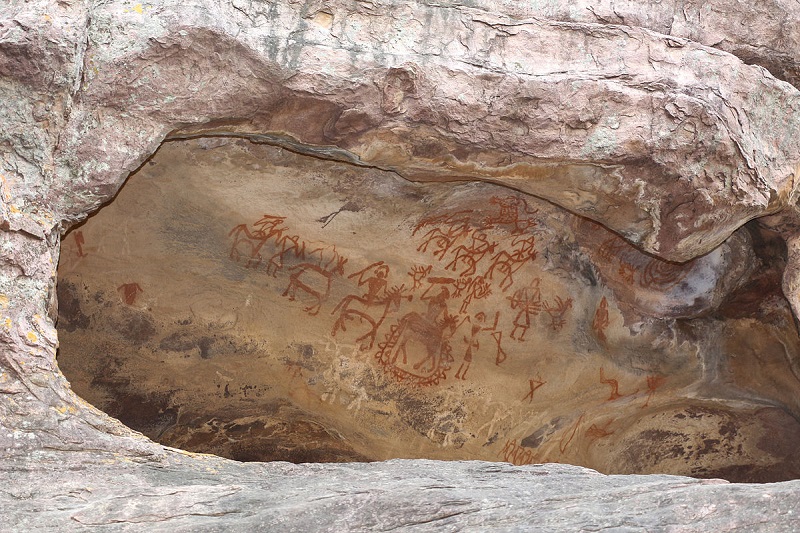
Bhimbetka, located in central India, contains more than 600 rock shelters adorned with prehistoric cave paintings. Mainly executed in white and red with an occasional use of yellow and green, the paintings generally depict the times and lives of those living in the caves.
In some caves, animals like tigers, bison, crocodiles, and lions are also seen. Its oldest paintings are considered to be around 12,000 years old.
Rock paintings have a number of layers that belong to a variety of epochs of time, which range from the Mesolithic, Upper Paleolithic Era to the early historic, protohistoric, and medieval ages. The most ancient scenes here are believed to belong to the Mesolithic Era. The breathtaking paintings may be witnessed even on the rock shelters’ ceiling at daunting heights.
The cover of the vegetation and dense forest protected the rocks painting from becoming lost to nature’s vagaries.
Mainly executed in white and red, with the periodic use of yellow and green with themes that are taken from the daily events of eons ago, the sceneries commonly depict dancing, hunting, elephant and horse riders, honey collection, animal fights, disguises, decoration of bodies, masks and various types of animals.
3. Lascaux Paintings
Date: 17,000 years old
Location: France
Subject: deer, horses, and bulls
Discovered By: Marcel Ravidat

The Lascaux Caves, given the nickname “prehistoric Sistine Chapel”, are a cave complex inside SW France adorned with the most famous and impressive cave paintings worldwide. These cave paintings are estimated to be around 17,000 years old.
Many of the paintings are located far away from the entrance and have to have been made with the help of candles. The most famous painting is Great Hall of the Bulls in which deer, horses, and bulls are displayed. One of its bulls is 17’ in length, the biggest animal found thus far in any cave.
2. Serra da Capivara
Date: 23,000 BC
Location: Brazil
Subject: Scenes of hunting and rituals, animals, and trees.
Discovered By: The Clovis people
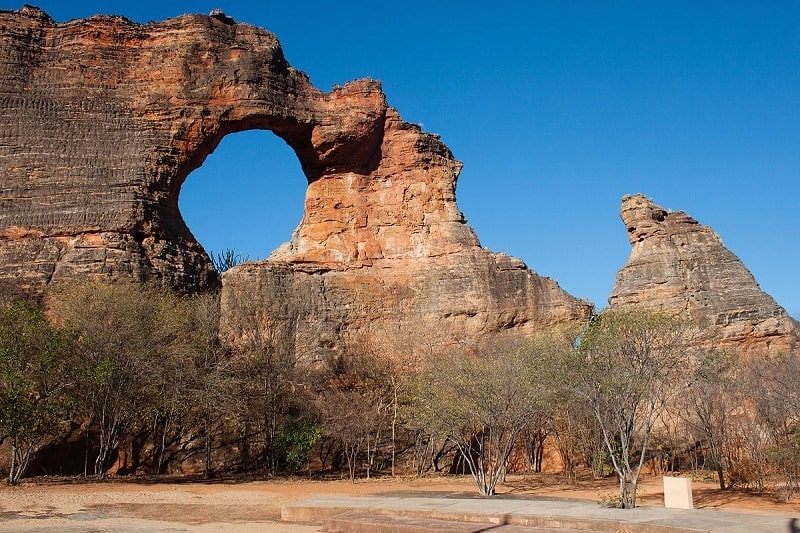
In northeast Brazil, Serra da Capivara National Park houses a number of rock shelters which are adorned with cave paintings. These paintings include sceneries of hunting and rituals, animal capivaras, and trees.
Some researchers think the oldest cave paintings inside the park were created 25,000 years ago. However, it’s disputed by many geneticists, as it would conflict with the presently accepted human settlement date within the Americas.
Human figures and wild animals dominate this rock art, and are integrated into complex sceneries that involve supernatural beings, hunting, dancing, skirmishing, and sexual activity. Artists depicted these animals which roamed the ancient brushwood forest area: armadillo, red deer, jaguar, capivara, tapir, lizard, and among others, the giant rhea.
Of those, the most common is the red deer. The animal sometimes simply is painted in outline, and other times it totally is infilled, or decorated internally with rows of dots or geometric patterns. Usually, the large mammals are painted in groups and typically are shown in a running position, as if attempting to escape from hunters.
1. Altamira Cave
Date: 35,600 years ago
Location: Spain
Subject: Ochre and charcoal images of handprints, bison, and horses
Discovered By: Marcelino Sanz de Sautuola
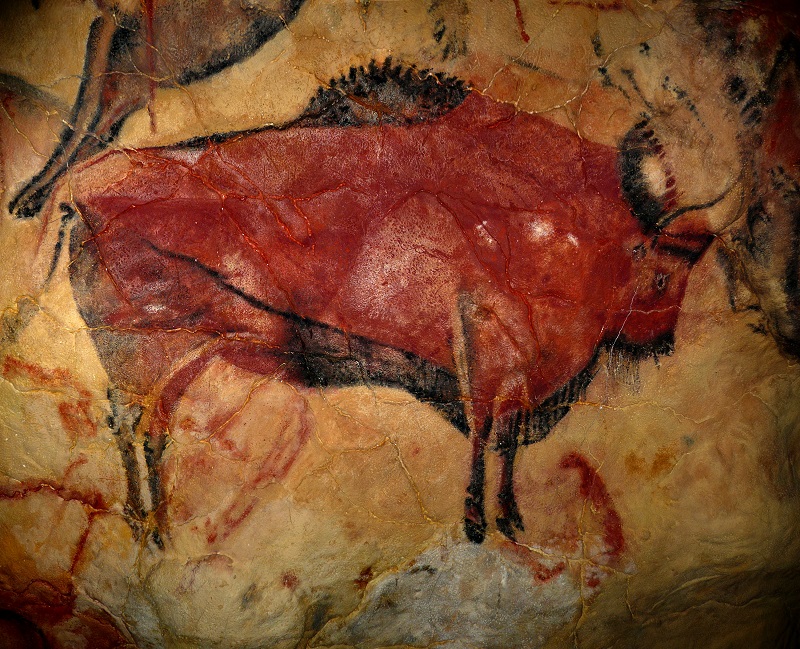
In northern Spain, discovered within the 19th century, Altamira Cave was the original cave where prehistoric paintings were found. Paintings were of such a high quality that scientific society had doubts about their authenticity and accused its discoverer of forgery.
Most folks didn’t think prehistoric men had the intellectual ability to generate any type of artistic expression. It wasn’t until the year 1902 that they were acknowledged as genuine.
The ochre and charcoal images of handprints, bison, and horses inside the Altamira Cave are amongst the best-preserved paintings worldwide.
OTHER POSTS YOU MAY BE INTERESTED IN


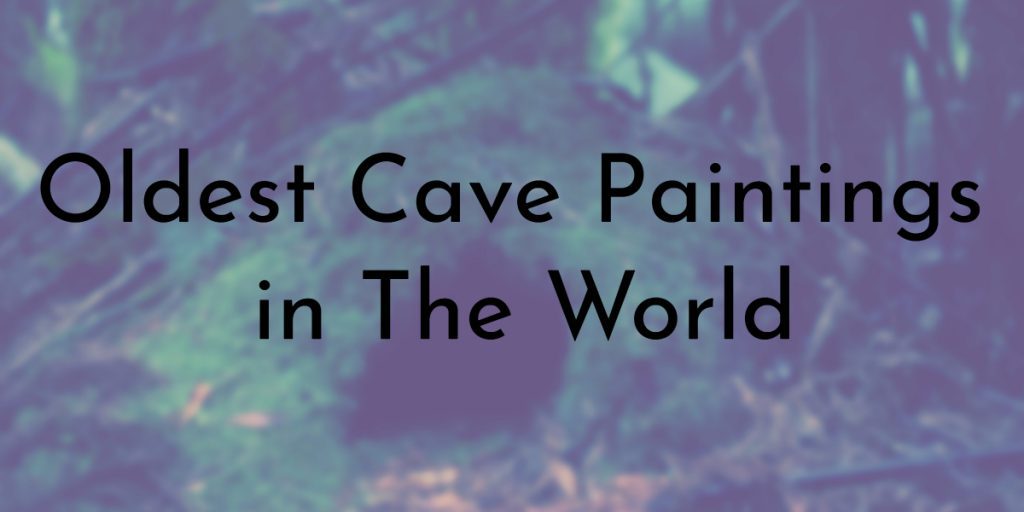









The Serra da Capivara pairings cannot have been discovered by Clovis people, none of who are date older than about 12,000 BP, and who were based in western North America.
Update: Cave paintings in Maros, Sulawesi now are the oldest based on the recent uranium dating method conducted by Austalian university. You can found its information all around the internet, including in National Geographic and Smithsonian websites.